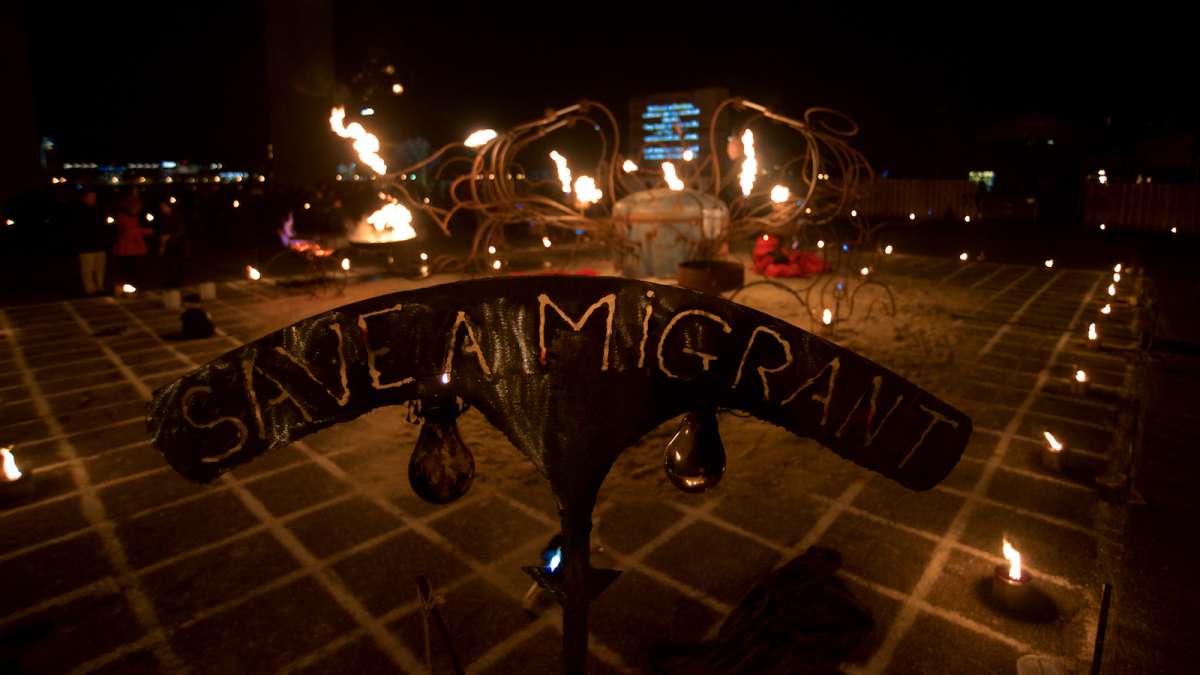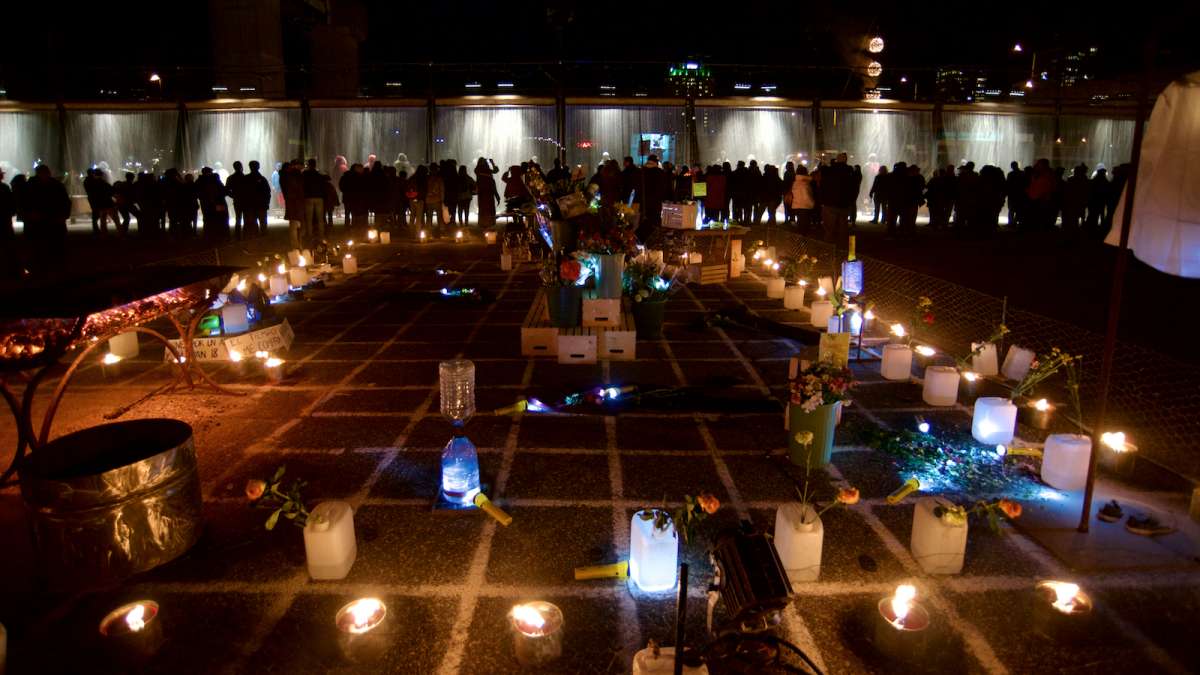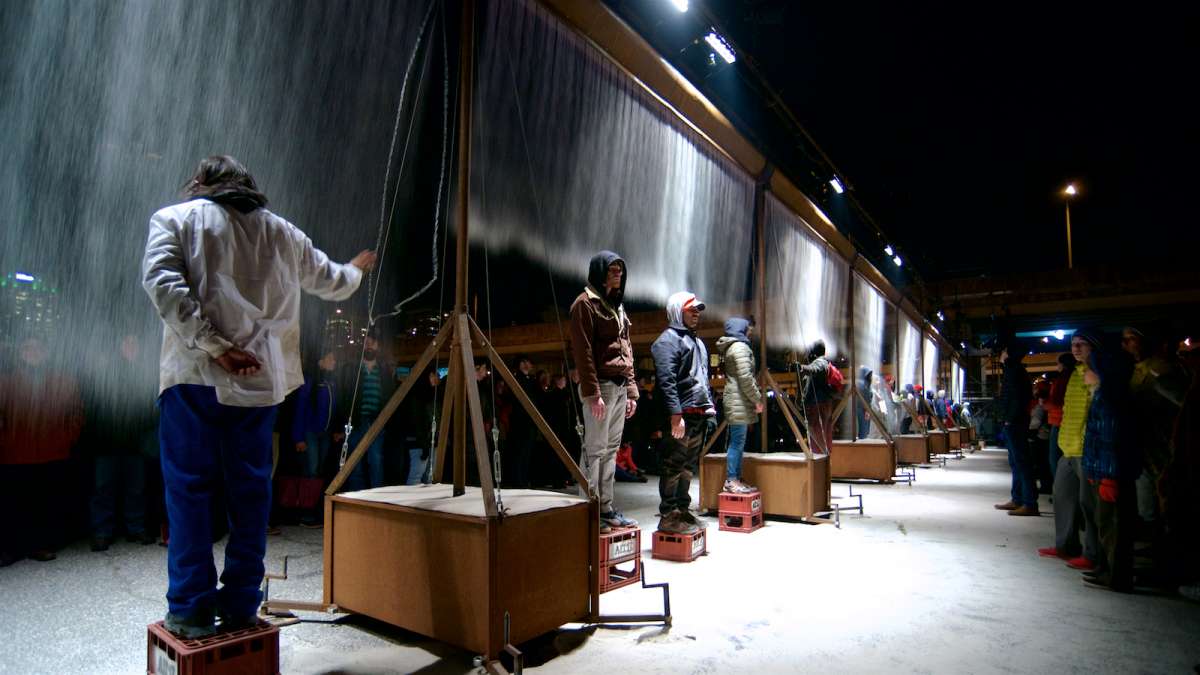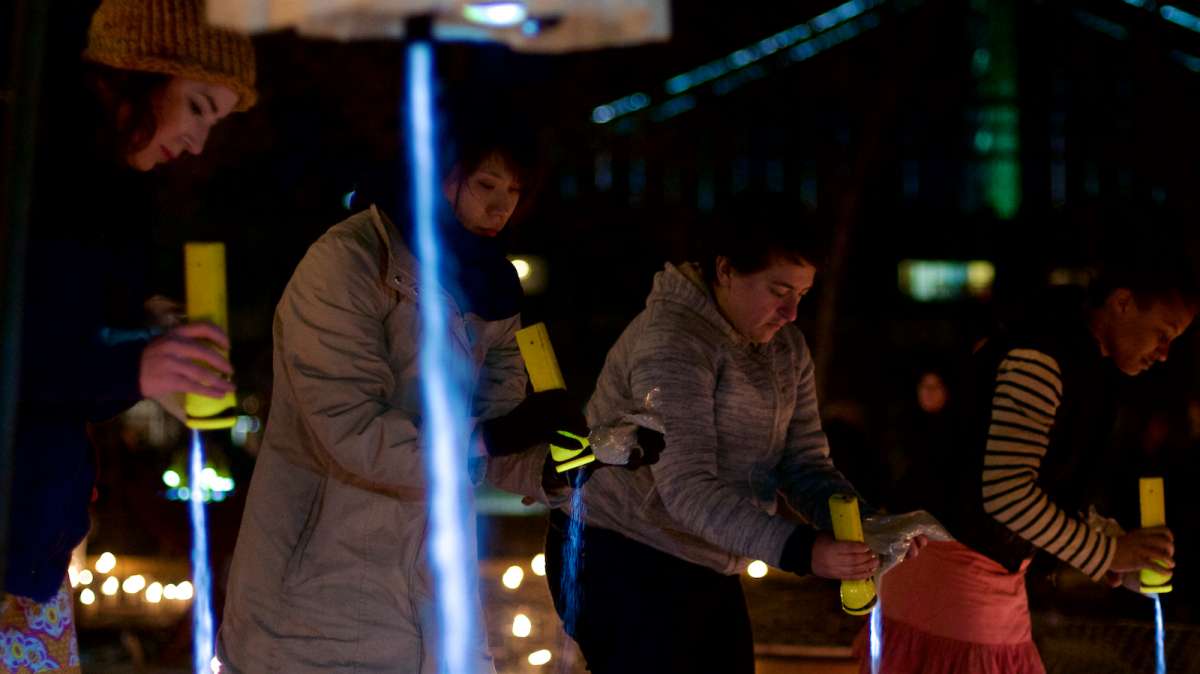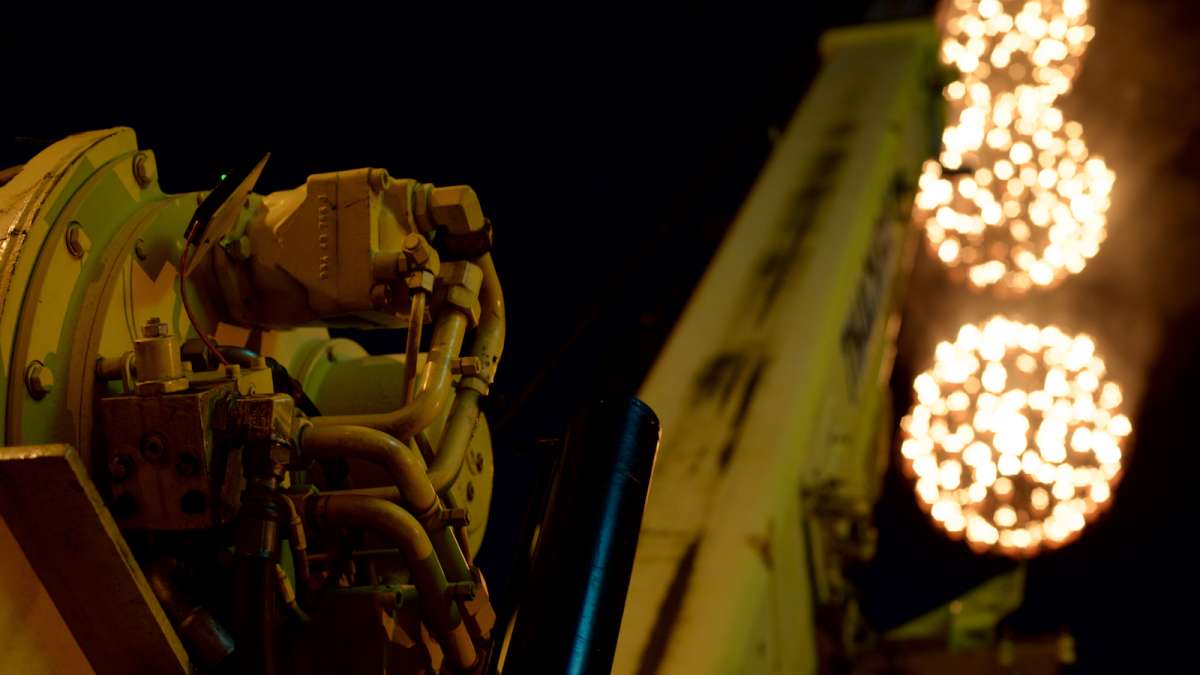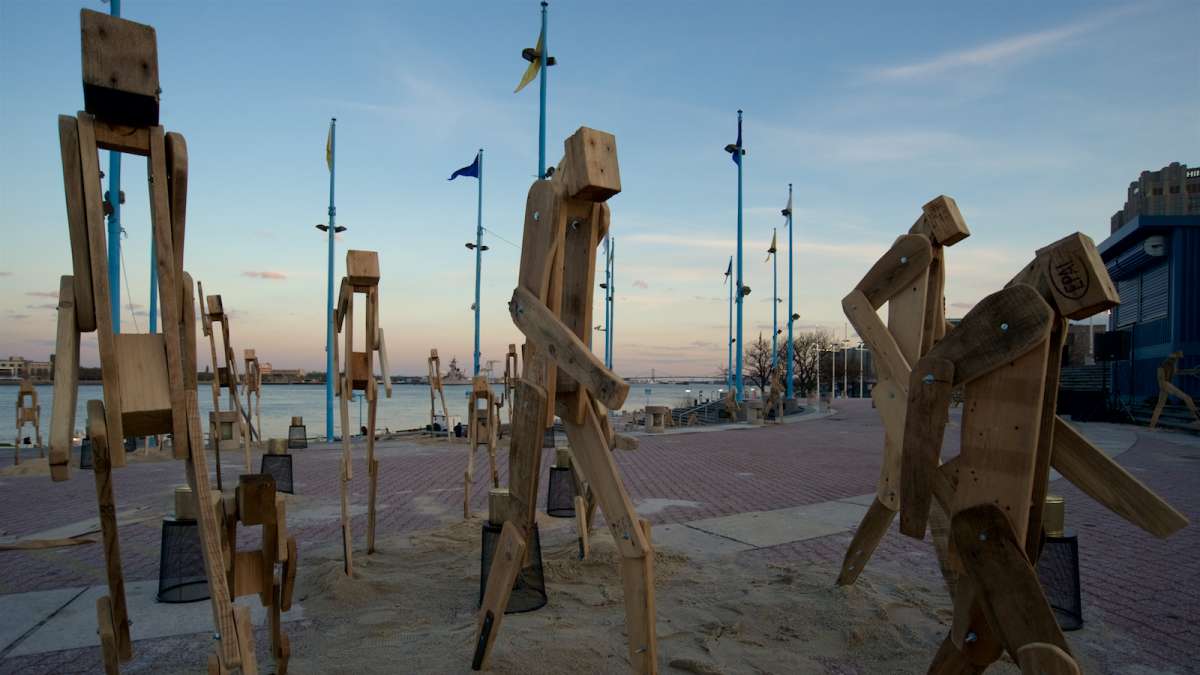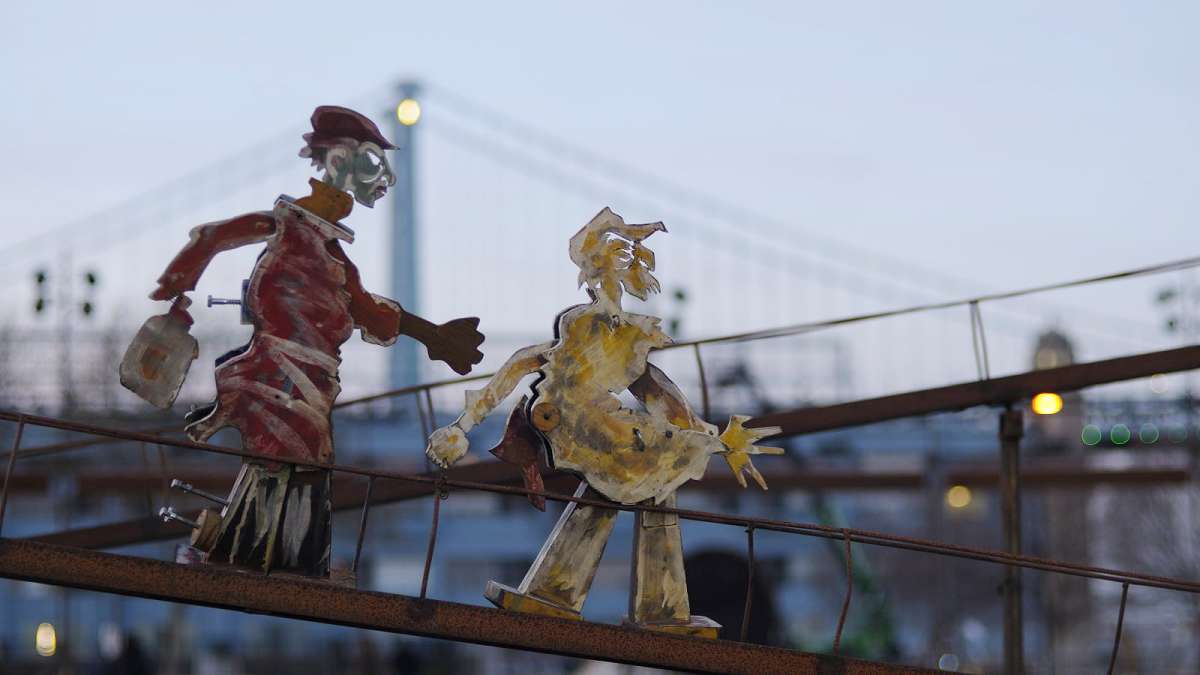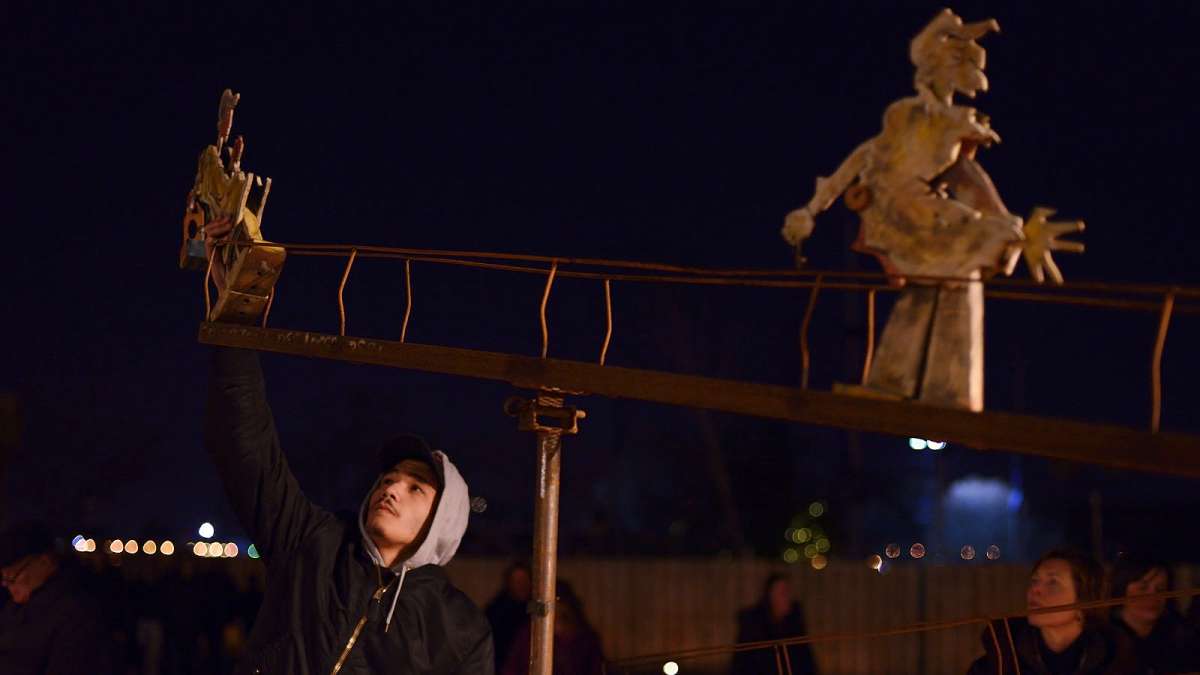A migrant’s pilgrimage to freedom and safety at the Philadelphia International Festival of the Arts
ListenIt’s not usual for a performance to use great balls of fire, rivers of sand, water, videos, puppets and a transformed urban landscape to tell a story. But, it in the case of “Article 13,” it all makes sense.
This year’s Philadelphia International Festival of Arts started with a controversial and highly charged event — a visceral and poetic exploration of the plight of refugees and migrants around the world.
To tell the story, a Mexican theater company and a French performance collective created a landscape that’s as stark and brutal as the border crossing as well as long lines of refugees looking for sanctuary in Europe, Africa, and the Americas.
“We created 10 distinct environments outdoors,” said Raul Mendoza of the Mexican theater group Teatro Linea de Sombra. “Each space presents a different perspective about immigration. And the public is invited to go from one to another to give each the time to explore what they see and hear.”
It all happened at night, by the light of fire torches and artfully designed illumination.
It was a fitting decision. Most borderlands come alive at night, a time for clandestine activities, seedy commerce, and desperate acts of escape. It’s when groups of people silently move toward some sort of promised land, fleeing violence, oppression and poverty. This apocalyptic parallel universe is at the core of “Article 13.”
Article 13 refers to a section of the U.N. Universal Declaration of Human Rights guaranteeing the right to flee your country. In the show, every fire, sculpture, sound and performance sends a message of what life’s like on the road away from home.
From the moment you enter, you are surrounded by hurried human figures cut in wood climbing steps. Passages from letters migrants sent home are projected on the walls. I asked visitor Arthur Smith describe what he was seeing..
“I’m walking right here in what used to be a parking lot, it looks like we’ve got 20 little vignettes with fire, a lot of metal, there’s some puppetry happening over here,” said visitor Adam Smith, describing the experience. “It’s very beautiful, there’s a gentleman with a torch.”
The entire event is about migration, immigration, refugees and the displaced. They walk, board trains and boats and any other means to flee their circumstances. It’s also about the profiteers who sell water at exorbitant prices, who sell leaky boats to African refugees and strand those who have paid to cross a border.
Embracing a world of stories
Alicia Laguna, founder of Teatro de la Sombra, remembers the project started almost four years ago as a sort of memorial. It remains a memorial, but it has changed and grown to reflect stories from around the world.
“It’s not one narrative, it’s many mixed together,” said Laguna. “It’s a subject matter so big that it cannot be contained in one event or one narrative.”
Laguna said she wants visitors to use their own images, emotions and ideas to build a migration story.
And some do. Aaron Hall went with his family not expecting to be so touched by the event .
“I have family across the world, Afghanistan,” he said. “So I know the struggles our family had go through to get here, that’s why I’m here now.”
Close by, an immense circle of fire emerges, perhaps signifying the sun’s transit or reminding people of its punishing presence in the hot deserts refugees traverse.
And then, there’s the wall of people lined up against a fence as cascades of sand fall on their heads and backs. The punishing shower represents the thirst, hunger and even torture some refugees endure.
The performance landscape is peppered with videos of people telling their stories.
“Yes, it’s risky,” says a middle-aged Guatemalan man. “But I’ll try again and again, the North is always there, doesn’t move.”
Piles of dirt mark the graves of those who didn’t make it through.
In one of the spaces, men from the French performance group Carabosse handle handmade puppets, depicting trains and boats with small passengers, refugees trying to move along.
Asked why this performance matters, puppeteer Jean Marie Proust replied that it is “grave, it’s serious, it’s a human problem.
“We want to present a testimony to make people aware of this,” he said.
When this quasi pilgrimage is over, people return slowly to more familiar territory. The organizers said they hope the visitors leave contemplating all they have seen and asking lots of questions.
WHYY is your source for fact-based, in-depth journalism and information. As a nonprofit organization, we rely on financial support from readers like you. Please give today.



